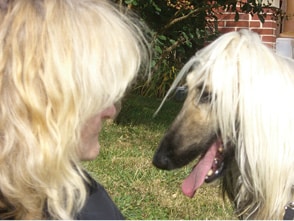There has been a lot of concern recently about proposed state laws that have been proposed in various states, the most recent, of course, being in Texas and Florida. The Florida bill defines a single intact female as a breeding female, causing the owner to be defined as a breeder whether they plan to breed from their dog or not. They would then be required to register as a breeder with all that that entails. The Texas bill and the Florida bill are still pending.
The Florida bill defines a single intact female as a breeding female, causing the owner to be defined as a breeder whether they plan to breed from their dog or not. They would then be required to register as a breeder with all that that entails.
When I remembered at least two others, Colorado and Utah, I went to the AKC Government Relations website to see what other bills might have been proposed in the past one to two years and their disposition. There was an incredible number of bills of varying types, covering everything from home insurance or residency being denied due to BSL to tethering. I skimmed those briefly, not being relevant to this column, but the sheer volume of legislation coming across the desks of the people at AKC is mind-boggling. I’ve sent an e-mail asking if they had a concise dataset of states with past and pending legislation that could impact breeders and their current status. In the meantime, I went online and found what I needed for past legislation—but nothing current.
I found what I was looking for at the Animal Legal and Historical Center at Michigan State University. They have lists of every state from A-Z. I skimmed the lists, only making notes that could potentially affect breeders. What I saw was that there is no general consensus as to what does or does not define a commercial breeder or a hobby breeder, but there is a general limitation on the number of so-called breeding females that can be allowed in each household or kennel. The most frequent minimum qualifying age has been six months. All intact females over that age are then being considered a breeding female, whether the owner has any intention to breed or not. Something that surprised me is that there are still many states listed which have no state requirements at all at this time.
Commercial breeders are licenced by the USDA/APHIS under the Animal Welfare Act, and federal law supersedes state law. Hobby breeders are exempted from the AWA under the “pet store exemption.” (I prefer private, non-commercial breeder as a definition, as for many it is a lifetime commitment, not “just a hobby.”)
The Puppy Protection Act has been revived for a third attempt, and from what I have seen the only major changes to the requirements will affect housing and exercise. This should not affect hobby breeders, but if there are definitions and clauses that I have not yet seen, please let me know about it!
What does concern me at the state level is the assumption that just because a bitch is of an arbitrary age (even if she has not yet gone through puberty) she must be considered to be a “breeding female.” In the case of someone who shows their dogs, a female may not be bred from for several years—if at all. Even if not subject to the AWA, a serious show breeder could fall foul of state law and have their future plans severely compromised. They could be forced to spay, sell, or give away any that are in excess of the allowed amount—which sometimes includes both males and females, including both dogs and cats and other pets.
It also bothers me that no efforts have been made to differentiate between dedicated breeders and the not so dedicated. When the USDA/APHIS rules were under discussion in 2013, the reason given by HSUS et al for the four female maximum was that if a breeder were allowed to keep five, more dogs would end up in shelters! This was a false narrative and not based in fact. It has also been claimed that 25 percent of dogs in shelters are purebred. (Well, that depends on your definition of purebred!)
The vast majority of dogs in shelters are, in fact, mixed breeds, pit bulls, and pit mixes, none of which are an AKC registered breed. There does seem to be a lot of Labradors, but this includes every medium-sized, shiny black dog which is probably some kind of Lab mix. Has this been discussed and made known in legislative debates?
With so much talk these days about preservation breeding, and the decreasing numbers of almost all pure breeds, these restrictive laws will become even more critical. How will breeds be preserved or saved from extinction if these limits are implemented everywhere? Dog show exhibitors would be unable to retain future show prospects and raise them to maturity, and breeders would be unable to develop multi-generational pedigrees.
In the years after WWII in the UK and Europe, it was the breeders who maintained kennels with dogs at stud and were able to both breed and retain young dogs until adulthood for future sale to breeders at home and abroad, and who brought their respective breeds back from the brink. Other breeders played their part by showing and breeding an additional breed—or even two breeds. It might have only been one or two dogs, or one litter in a rare breed, but it helped to preserve and develop new bloodlines. Today the public is presented with “red flag” lists as to how to choose a breeder, and having more than one breed is often one of them. So, the general public needs to be made aware and reminded that a lot of the propaganda coming from the Animal Rights publicity machine is false.
Breeders must remain aware that whether or not the AWA will affect you, AR promoters will come in by the back door, cultivate politicians at the local level, and create state laws that WILL affect everyone—unless they are nipped in the bud before they are allowed to start. Talk to friends and neighbors, chat with co-workers, and when state or county laws are proposed, get involved and take action.
With so much talk these days about preservation breeding, and the decreasing numbers of almost all pure breeds, these restrictive laws will become even more critical. How will breeds be preserved or saved from extinction if these limits are implemented everywhere? Dog show exhibitors would be unable to retain future show prospects and raise them to maturity, and breeders would be unable to develop multi-generational pedigrees.









